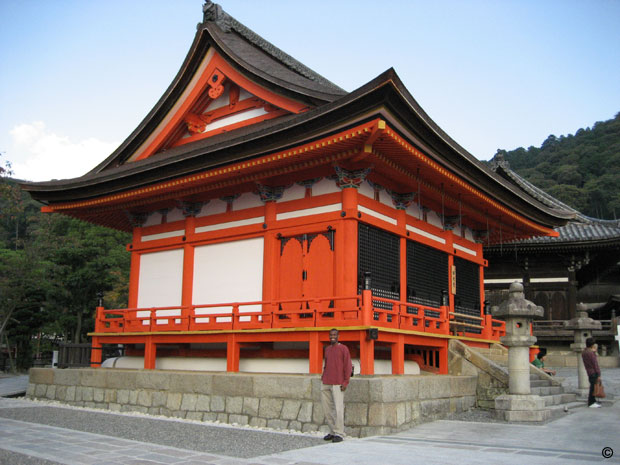Kyoto has distinguish itself as a must see destination for anyone visiting Japan to experience more than a century of culture. Kyoto alone has 17 World Heritage Sites, these include Kiyomizu Temple and Nijo Castle. The sheer number of breathtakingly beautiful shrines and temples, the Tamba Mountains, tranquil Japanese gardens, traditional tea houses, fantastic food, colourful festivals and everything you would expect to find in a modern, vibrant, futuristic city are what makes this former capital of Japan (before Tokyo) a destination that should be on everyone’s bucket list.

The iconic Kyoto Tower, the tallest building in the city with its viewing platform 100 metres above the ground, offers spectacular views and makes a great place to start a tour and get a feel for what this city offers.
Next stop Nijo Castle, built in 1626 and protected with a wide moat and massive stone walls. It houses the Ninomaru Palace, famous for its ingenious nightingale floors – corridors build with planks that make a sound like the bird’s song to warn of intruders.
Another must see is Kinkaku-ji, or the golden pavilion, formally known as Rokuon-ji, a Zen temple which has two top floors completely covered in gold plate. The reflection of his golden marvel in the mirror of its large pond is perhaps the most widely recognised image of Kyoto.
Founded in AD780, the Kiyomizu-dera temple, which literally means pure water temple was built in the wooded hills of the Otawa Waterfall, east of Kyoto. It is best known for its wooden stage, which juts out 13 metres above the hillside, giving a view of the cherry and maple trees below that are riot of colour in both spring and autumn.
However, Kyoto offers far more than its heritage sites. The Higashiyama District along the lower slopes of Kyoto’s eastern mountains is a great place to experience traditional Kyoto along preserved historic narrow lanes with wooden buildings and old-world shops selling local specialities.
Kyoto Gosho, the former Imperial Palace in the centre of Kyoto, is perfect for relaxing stroll in its large Kyoto Gyoen National Garden, while Daitoku-ji Temple, with 21 towers in its vast precinct, is the place to enjoy a traditional teahouse.
Such a long history means Kyoto also has a rich culinary tradition, which ranges from aristocratic kaiseki ryori-elaberate refined dinners with each course served in a set order – to home-style obanzai ryori cooking, which is made up of small dishes made from local seasonal produce.
Food lovers should head to the bustling Nishiki Market, known as Kyoto’s kitchen, for fresh seafood and Kyoto specialities such as Japanese sweets (which you just have to try) and for nightlife and restaurants, it has to be the Pontocho district. You should also sample Kyoto’s speciality tofu dish, yu do-fu, particularly in winter when the Nanzenji Temple serves it own signature dish, Nazenji Dofu.
Stay in a traditional ryokan, or inn, complete with tatami floors and futon beds (they range from the basic to the luxurious) for a real feel for the culture and try to time your visit with one of the festivals, such as Gion Matsuri, which take over the month of July and includes grand processions.
With so much to see and do, and to ensure you don’t miss any of Kyoto’s globally recognised sites, take a temple and shrine tour, which will take guide you through more than a thousand years of history. And before you leave, take a trip in a traditional rickshaw.